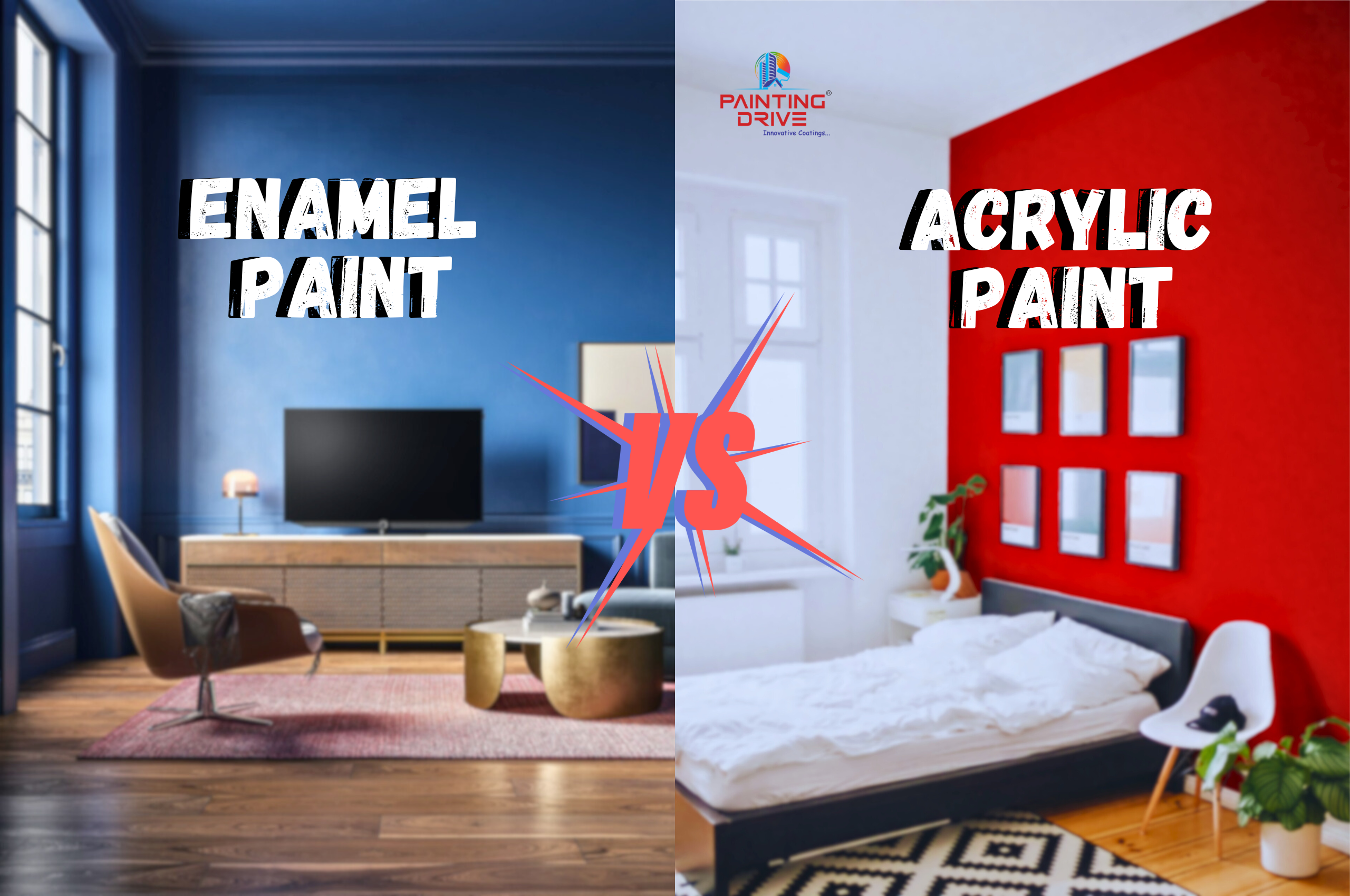When it comes to painting, the choice of paint can significantly impact the final look, durability, and application process. Among the numerous types of paint available, enamel paint and acrylic paints are two of the most popular choices. Both have distinct characteristics that make them suitable for different projects. Here, we delve into the top five differences between enamel paint and acrylic paint.

1. Composition and Base
Enamel Paint: Enamel paint is typically oil-based or solvent-based. This composition gives it a hard, glossy finish that is durable and resistant to wear and tear. The solvents used in enamel paint can emit strong fumes, requiring proper ventilation during application.
Acrylic Paint: Acrylic paint, on the other hand, is water-based. This means it is made from pigments suspended in an acrylic polymer emulsion. Acrylic paint is known for its versatility, easy clean-up with water, and lower levels of toxicity compared to enamel paint.
2. Drying Time
Enamel Paint: One of the notable characteristics of enamel paint is its long drying time. Depending on the thickness of the application and the environment, it can take anywhere from a few hours to several days to fully cure. This extended drying period allows for a smoother, more even finish but requires patience and planning.
Acrylic Paint: Acrylic paint dries much faster than enamel paint. It can dry to the touch within minutes to a few hours. This quick drying time makes it ideal for projects that need to be completed quickly or for multi-layered painting techniques where successive layers are applied in rapid succession.
3. Finish and Appearance
Enamel Paint: Enamel paint is known for its hard, glossy, and often opaque finish. It provides a smooth, glass-like surface that is highly durable and resistant to scratching and staining. Enamel paint is often used for surfaces that require a tough, long-lasting finish, such as metal, wood, and outdoor furniture.
Acrylic Paint: Acrylic paint can vary in finish, ranging from matte to glossy, depending on the formulation and the addition of mediums. While it can achieve a high-gloss finish similar to enamel, it is more commonly used for its matte or semi-gloss finish. Acrylic paint is highly versatile, making it suitable for a wide range of surfaces, including canvas, paper, wood, and even fabric.

4. Durability and Weather Resistance
Enamel Paint: Due to its oil-based composition, enamel paint is extremely durable and weather-resistant. It can withstand harsh outdoor conditions, making it ideal for exterior surfaces, metal structures, and areas prone to high traffic and wear. Enamel paint’s durability also makes it resistant to moisture, which helps prevent rust on metal surfaces.
Acrylic Paint: While acrylic paint is also durable, it is not as resistant to extreme weather conditions as enamel paint. However, it is flexible and can expand and contract with temperature changes without cracking. This makes it suitable for a variety of indoor and outdoor applications, especially when used with a protective sealer. Acrylic paint is also UV-resistant, which helps prevent colors from fading over time.
5. Application and Cleanup
Enamel Paint: Applying enamel paint requires careful preparation and technique. It often needs a primer to ensure proper adhesion and may require multiple coats for an even finish. Cleaning up after using enamel paint involves solvents such as mineral spirits or turpentine, which can be messy and require careful handling due to their toxicity.
Acrylic Paint: Acrylic paint is much easier to work with, especially for beginners. It can be applied directly to many surfaces without a primer, although a primer can improve adhesion and durability. Cleanup is simple and can be done with soap and water, making it a more convenient option for quick projects and those working in indoor spaces.
Also read: Laminate Kitchen Or Acrylic Kitchen: Which Kitchen Cabinet Finish Is The Best?
Conclusion
Both enamel paint and acrylic paints have their unique advantages and are suited for different types of projects. Enamel paint, with its hard, glossy finish and superior durability, is perfect for high-traffic areas and outdoor applications. Acrylic paint, with its fast drying time, versatility, and ease of use, is ideal for artistic endeavors and quick-turnaround projects. Understanding these key differences between enamel paint and acrylic paints will help you choose the right paint for your next project, ensuring the best results for your specific needs.




